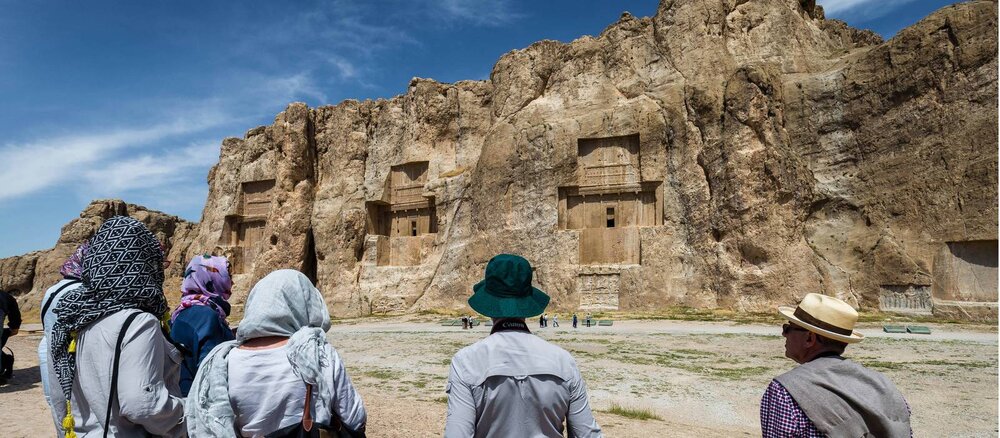Iran ranks 1st globally as a pocket-friendly destination: WEF

TEHRAN – The World Economic Forum (WEF) has ranked Iran first in the world as a pocket-friendly destination.
“Iran ranks 1st globally [in the category of Price Competitiveness], thanks to low ticket taxes and airport charges (7th), fuel prices (5th) and high purchasing power (5th),” according to WEF’s Travel & Tourism Competitiveness Report 2019, which was released earlier this month.
The Forum also categorized the Islamic Republic in “The Middle East and North Africa (MENA)” region, saying “In fact, no MENA country scores above the global average for natural resources and only Egypt and Iran score above for cultural resources.”
“The MENA region improved its T&T [travel and tourism] competitiveness since the last edition of the TTCI [Travel and Tourism Competitiveness Index]. With 12 of the 15 MENA economies covered by this year’s index increasing their score compared to 2017, the region was able to slightly outpace the global average in competitiveness growth. This is particularly important given that, in the aggregate, T&T accounts for a greater share of regional GDP than in any of the other four regions.”
Regarding tourism expenditure, the report says “MENA is also the only region where international visitor spending is greater than domestic visitor spending. Yet despite improved competitiveness and a strong reliance on T&T for overall economic growth, MENA continues to underperform the global TTCI score average.”
Spain, France, Germany, Japan and the United States are considered as the world’s most travel-ready nations, according to the latest travel and tourism ranking of the World Economic Forum.
“There’s little change since the last edition was released two years ago, with only one country altering its position: the United Kingdom has slid to sixth place, behind the United States.”
Tourism on the rise
The travel and tourism industry contributes 5% towards Spain's overall GDP, a figure that looks set to rise over the next decade as the global middle class – particularly in regions such as Asia – continues to grow, weforum.org wrote.
In fact, travel and tourism as a global industry has flourished since the last report in 2017, and its contribution to global GDP (currently at 10%) is expected to rise by as much as 50% over the next decade. At the same time, one of the big findings of this year’s report was that growth in tourism-friendly infrastructure – roads, ports, airports and hotel accommodation, for example – has languished at only 1.4%.
“As international connectedness continues to rise, we see travel and tourism competitiveness continue to grow,” says Christoph Wolff, World Economic Forum’s Head of Mobility. “Increased tourism is bringing great benefits to many economies but must be managed properly by both policymakers and businesses for a sustainable future.”
For over a decade the World Economic Forum engaged leaders in travel and tourism to carry out an in-depth analysis of the travel and tourism (T&T) competitiveness. Published biennially, Travel & Tourism Competitiveness Report and Index benchmarks the T&T competitiveness of 140 economies and measures the set of factors and policies that enable the sustainable development of the Travel & Tourism (T&T) sector, which in turn, contributes to the development and competitiveness of a country.
Tourism in Iran
Last November, the Trump administration reinstated sanctions on Iran, mainly the ones that had been lifted under the 2015 nuclear deal, in order to batter Iran’s economy, however, according to official data, they have so far failed to lessen foreign arrivals to the Islamic Republic.
Although the sanctions together with anti-Iran propaganda campaigns have decreased Western tourists but the country has managed to compensate and even improve by doing its best to attract more from neighboring states.
“Nearly 7.8 million foreign nationals visited Iran over the past year that shows a 52.5 percent increase year on year. The country hosted 5.1 million travelers in 1396 (March 2017-18),” deputy tourism chief Vali Teymouri said in April.
Iran also eyes to have a bigger share of Chinese tourism, as it, in a unilateral measure, recently approved to waive the visa requirement for the Chinese passport holders. To encourage and reassure sightseers, the Iranian government has decided not to stamp the passports of foreign tourists to help them skip the U.S. travel ban.
Iran hosted a record high of nearly 600,000 medical travelers during the first four months of the current Iranian calendar year (March 21-July 21), nearly equal to the figure for the whole past year, according to an Iranian association for the health tourism promotion. It has set its goals to exceed its yearly medical travelers to around 2 million in [calendar year] 1404 (March 2025-March 2026).
The 2019 Travel Risk Map, which shows the risk level around the world, puts Iran among countries with “insignificant risk”, a category where the UK, Denmark, Switzerland, Norway, and Finland are placed in.
The Islamic Republic boasts hundreds of historical sites such as bazaars, museums, mosques, bridges, bathhouses, madrasas, mausoleums, churches, towers, and mansions, of which 22 being inscribed on the UNESCO World Heritage list.
AFM/MG
